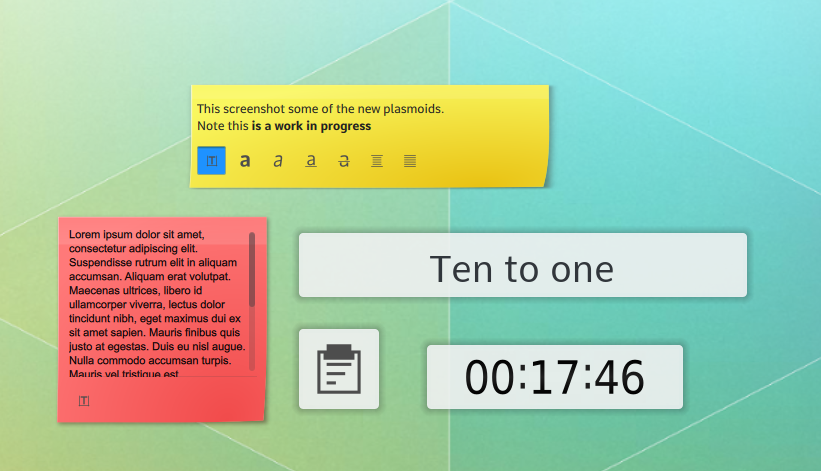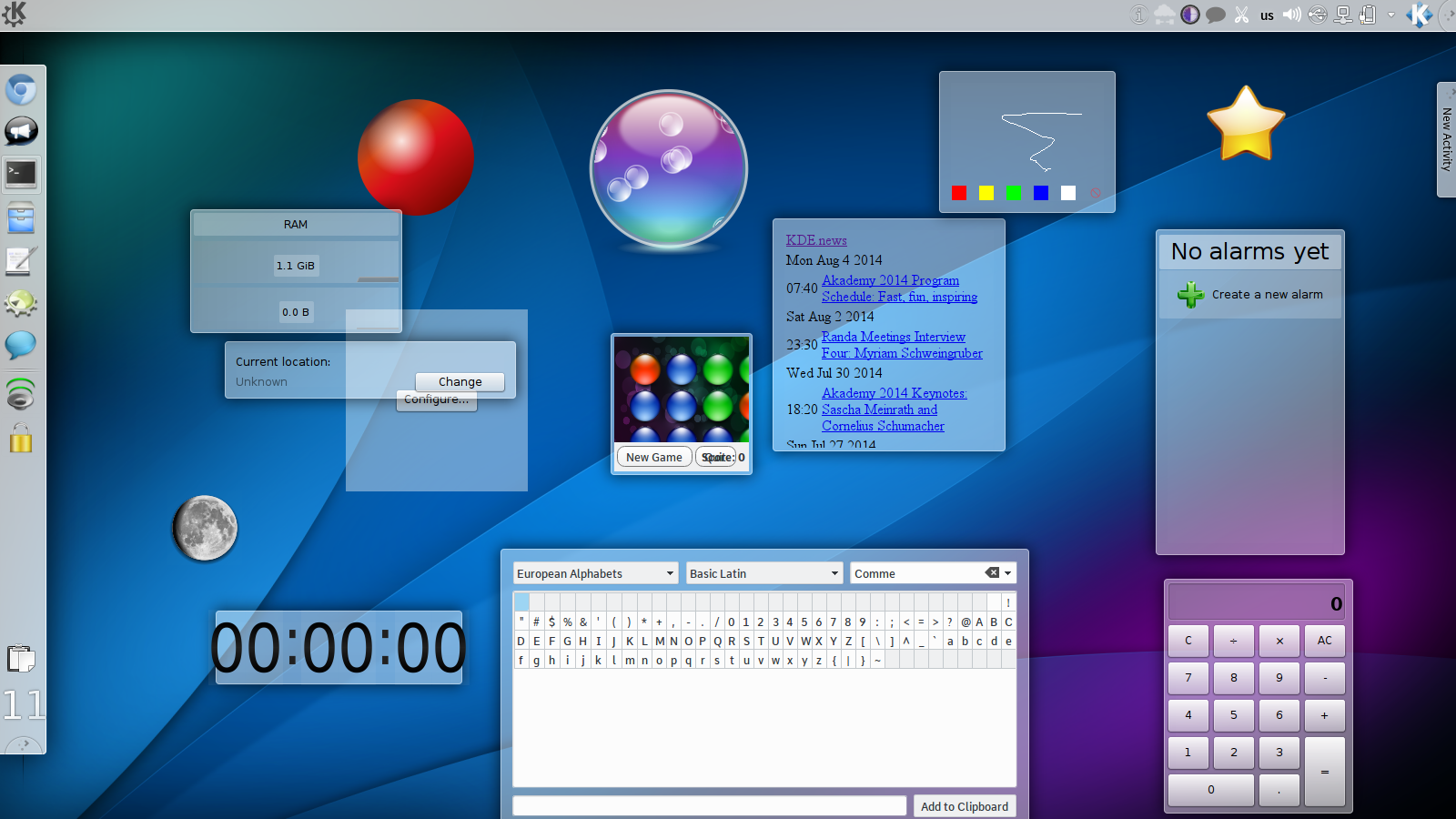Since my last blog post on plasma addons there has been a lot of activity, existing contributors are active on their own plasmoids, and there are many new faces coming on to take up the challenge of maintaining their own small part of Plasma.
What's been happening
All Plasma 5 development has moved to the master branch, ready for the 5.1 release.
Aleix Pol finished porting the quickshare applet which allows uploading text and images to a pastebin server by clicking and dragging. Xuetian Weng completed the Input panel plasmoid, that allows for entering chinese characters and Kai Broulik finished the Fuzzy Clock plasmoid. I started the notes plasmoid, which is close to being ready for review.

The VDG have been active in designing the ported applets, with the help of kver the system load viewer applet changed significantly:

A small bit of polish makes a huge difference to the end result, and Martin Yrjölä has been leading the porting process of that.
Spring cleaning
We are constantly adding new things so it's important to clean out old code at the same rate. We need to remove applets that failed to be maintained, or are simply gathering dust and only invest porting effort in what is useful.
With this I am sad (well, not really) to announce:
We've dropped the bouncy ball!
I know several people liked this applet but when trying to develop a professional experience toys and gimicks aren't a good thing to be shipping by default. The user's desktop is not a showcase for us to experiment with.
That isn't to say we want to police what people make and use, developers are still able to distribute all content through kde-look or other services, we are just making the most of our main distribution channels.
Getting involved
There are still several plasmoids that we want to have available to Plasma 5 users, that are seeking maintainers. Unless people step up to both port and maintain them, it won't happen. So if there's anything you use regularly and miss, please look at the TODO and talk to us on #plasma.




